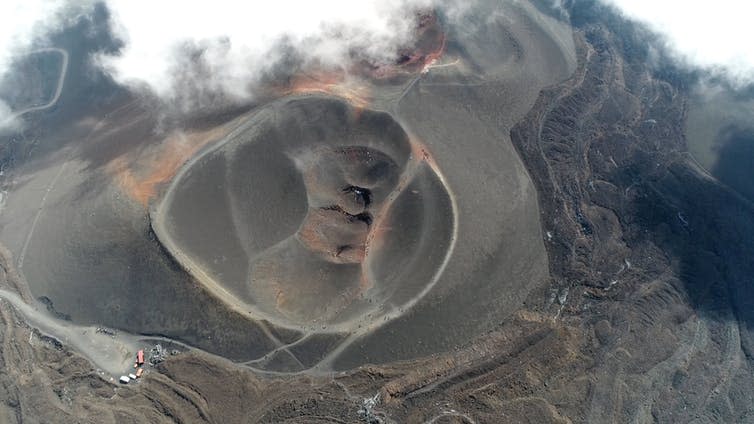Italy’s volcano Mount Etna is sliding towards the sea and ‘is more dangerous than thought’

Italy’s volcano Mount Etna is sliding towards the sea and could trigger a tsunami when it finally crashes into the water, experts have warned.
Europe’s most famous volcano is edging towards the sea as it collapses under its own weight – known as ‘gravitational instability’.
Previously, researchers had assumed the collapse was being driven by lava – but researchers now believe it poses an even greater danger.
Dr Morelia Urlaub, of the Helmholtz Centre for Ocean Research in Germany, said a collapse ‘could lead to a tsunami’.

She said: ‘Mount Etna is a really big volcano, more than 3,300 metres, and the lava is making it grow bigger all the time.
‘So its own weight is causing the flanks to spread outwards into all directions and this is what we mean with gravitational instability.’
READ MORE FROM YAHOO NEWS UK:
This is now the world’s most powerful passport for travel freedom
Hurricane Michael: At least one person killed as ‘terrifying’ 155mph winds lash Florida
Greek island bans overweight tourists from riding donkeys after animals suffer spinal injuries
Christian bakers win Supreme Court ruling that they discriminated against ‘Support Gay Marriage’ cake
Storm Callum to hit UK on morning of Princess Eugenie’s royal wedding
‘This movement is important to study as it could lead to a catastrophic collapse of the volcano.
‘The results of this study suggest Etna’s flank movement in fact poses a greater hazard than previously thought.’
From April 2016 to July 2017, Dr Urlaub monitored changes underwater using acoustic technology using a network of transponders on the sea floor.
Dr Urlaub said: ‘The principle behind the technology is really simple. We cannot use GPS or other satellite-based measurements in the ocean due to the high absorbance of electromagnetic waves in water
‘So we use sound waves, which works really well in water. We placed a network of five transponders on the seafloor and they were sending acoustic signals to each other.
‘Because we know the speed of sound in water, we can convert the time-of-flight of the acoustic signal between transponders into distances.
‘When the distances between the transponder change, then the seafloor has moved.’


